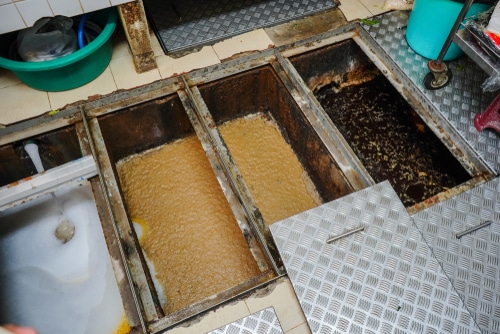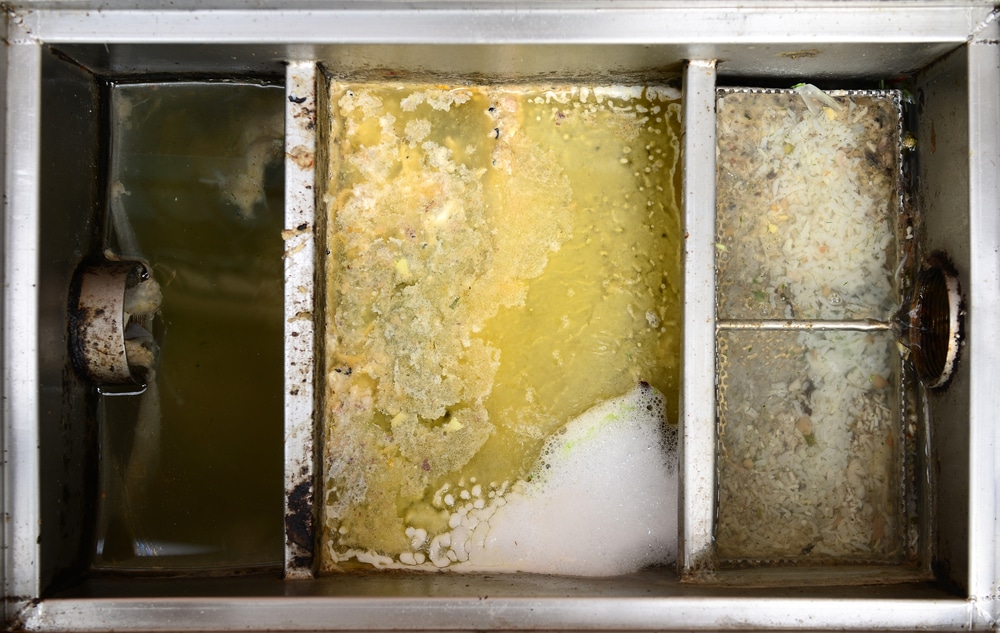Menu
Menu
Menu
Regular cleaning is key to keeping the grease trap in good working order and preventing unpleasant odors, backups, and clogs. The frequency of cleaning depends on the volume of FOG generated by the kitchen, the size of the grease trap, and how the kitchen uses the grease trap. This article will discuss the importance of grease trap cleaning, the best practices for cleaning a grease trap, and some tips for maintaining a grease trap in between professional cleanings.
A grease trap is a plumbing device designed to intercept and separate grease and oil from the wastewater before entering the sewer or septic system. The grease trap is typically installed in commercial and industrial kitchens, such as restaurants, hotels, and institutions, to prevent grease and oil from clogging the sewer lines and causing blockages or backups.The purpose of a grease trap is to protect the sewer or septic system from blockages and damage caused by grease and oil and prevent pollutants from entering the environment.
Regular cleaning of grease traps is essential for maintaining the proper functioning of the drainage system in commercial kitchens, preventing backups and clogs, reducing unpleasant odors, and protecting the environment. Grease traps separate and retain fats, oils, and grease (FOG) from the wastewater generated by commercial kitchens before entering the sewer system. Still, as the grease trap captures more and more FOG, it will eventually require cleaning to maintain its effectiveness. Cleaning frequency depends on the volume of FOG generated by the kitchen, the size of the grease trap, and how the kitchen uses the grease trap.

There are several benefits to having a clean grease trap:
Several grease traps are used in commercial and industrial kitchens to intercept and separate grease and oil from the wastewater before entering the sewer or septic system.
It’s important to select the correct grease trap that best fits the needs of the kitchen and facility. Factors such as kitchen size, the volume of wastewater, and local regulations can all play a role in determining the best type of grease trap to use.
The size of the grease trap can impact the frequency of cleaning because it affects how much FOG the trap can hold before it needs to be cleaned. Larger grease traps have more capacity to retain FOG and, therefore, can go longer between cleanings, whereas smaller grease traps will fill up more quickly and require more frequent cleaning.
The frequency of cleaning a grease trap depends on several factors, including the volume of FOG generated by the kitchen, the size of the grease trap, and how the kitchen uses the grease trap. Grease traps should be cleaned every three to six months. However, some municipalities may have different requirements. Additionally, if a kitchen generates a high volume of FOG, it may be necessary to clean the trap more frequently. A kitchen with a lower FOG volume can go longer between cleanings.

If not handled properly, grease trap cleaning can pose some dangers to the person cleaning it and the surrounding environment. The hazards include slips, trips, and falls from working in wet and slippery areas, fire hazards from flammable materials, hazardous materials such as chemicals that might be present, the potential dangers of working in confined spaces, and the heavy lifting required for the task. These hazards can be mitigated by hiring a professional and experienced grease trap cleaning service familiar with the proper safety procedures with the appropriate equipment and training. The service will also ensure that the cleaning process is done in a manner that is safe for everyone involved and the environment.
The time required for cleaning a grease trap can vary depending on various factors, such as the size of the trap, the amount of FOG it contains, and the method used for cleaning. A small grease trap that is cleaned manually might take around 4-8 hours, while a larger grease trap or one cleaned with specialized equipment might take longer, possibly several days. It’s important to note that some grease traps have to be cleaned more frequently than others, and the grease trap location and accessibility might also impact the cleaning time.
If a grease trap becomes full, it can result in several problems, such as blockages and backups in the drainage system, reduced effectiveness, health hazards, environmental damage, legal issues, and extra costs. An overfull grease trap will not be able to properly separate the FOG from the water, allowing it to pass into the sewage system and causing blockages and backups. This can also lead to unpleasant odors, health hazards due to the attraction of insects and rodents, and environmental damage to local waterways. It also may result in penalties for not complying with local regulations.
Yes, a reputable and experienced grease trap cleaning service should be able to provide different cleaning frequencies depending on your grease trap needs. They should also consider local regulations and the grease trap manufacturer’s recommendations for the appropriate cleaning intervals. It is also essential for them to offer regular maintenance plans and be flexible in adjusting the plan as per your grease trap usage.
Professionals have the proper training, equipment, and personal protective gear to safely handle and dispose of the waste material; they are familiar with the regulations and can ensure compliance. By hiring a professional, the cleaning process is done quickly and efficiently, which can minimize disruption to your business operation and liability insurance to mitigate any potential damage or accidents while they are working on your property.
Grease trap cleaning is an essential task that must be performed regularly to ensure the proper functioning of commercial kitchen drainage systems. Our team is knowledgeable about the appropriate safety precautions, has the necessary equipment and training, and is aware of local regulations to ensure that the grease trap is cleaned correctly, safely, and in compliance with the rules. With our services, you can rest assured that the grease trap will be adequately maintained, preventing backups and clogs, reducing unpleasant odors, and protecting the environment. Contact us today to schedule your grease trap cleaning service to keep your kitchen running smoothly and your drainage system free of blockages.

Site By: Strictly Plumbers